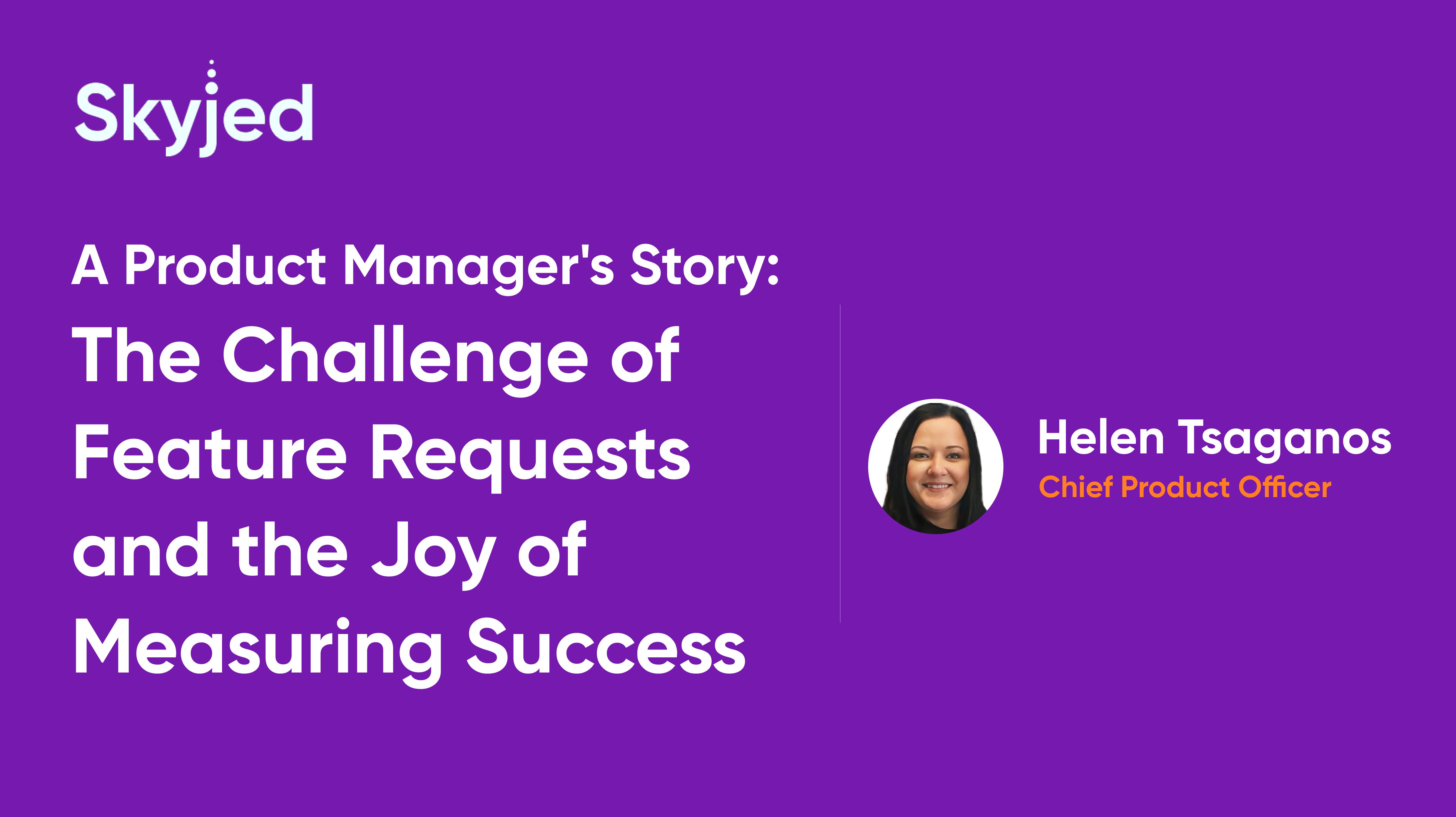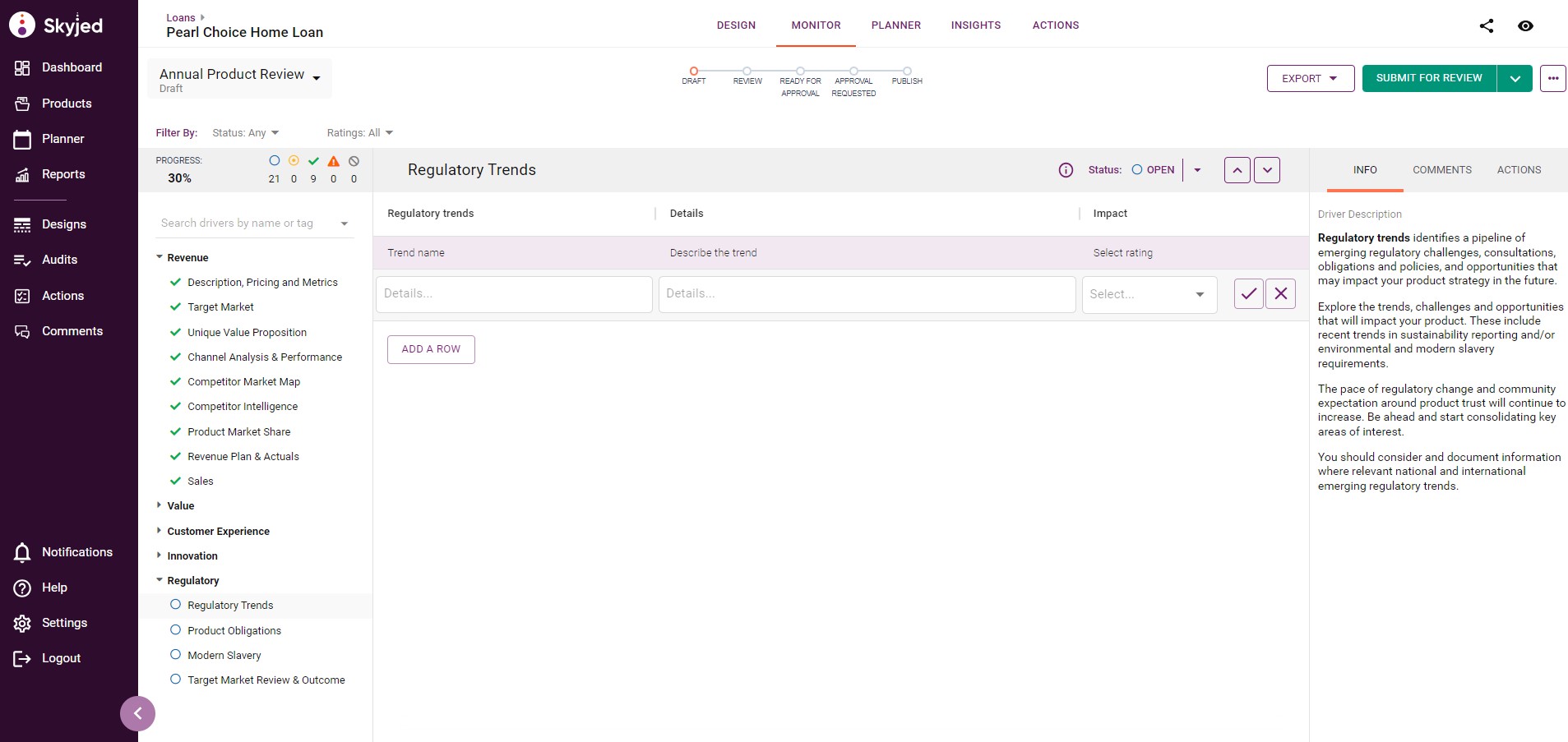The Challenge of Feature Requests and the Joy of Measuring Success
by Helen Tsaganos

As a Product Manager, few things are as exasperating as managing the relentless deluge of feature requests. However, what amplifies this challenge even further is the need to juggle these requests while considering their business case (return on investment) or lack of or customer validation and ensuring that post-implementation, they deliver the expected value.
Here, I delve into the intricacies of this double-edged sword.
The Challenge of Balancing Feature Requests with Business Cases
Feature requests often come from various sources - customers, stakeholders, internal teams, senior leaders, or even your own innovative ideas. Each request SHOULD carry a unique business case, which should ideally justify its inclusion in your product roadmap.
However, aligning these requests with business goals and priorities is an intricate dance that many product managers grapple with. Here's why it's a taxing ordeal:
Assessing Business Value: Evaluating the business case for a feature request is not just about its potential to enhance the product; it's about assessing its impact on key business metrics like revenue, user acquisition, or customer retention.
Return on Investment (ROI): To make informed decisions, product managers need to calculate the expected ROI for each feature. This involves estimating the costs involved in development, maintenance, and support and comparing them to the anticipated benefits.
Post-Implementation Success: Even after meticulous evaluation, the true measure of a feature's worth comes post-implementation. Did it deliver the anticipated business value? Did it improve the user experience? Did it generate the expected ROI? I find this is often not something that is always focused on.
Monitoring Metrics: Defining success metrics is crucial. These could be conversion rates, user engagement, revenue growth, or any other KPI directly related to the product’s objectives. Measuring these metrics accurately is essential.
Iterative Improvement: If a feature falls short of expectations, Product Managers are often tasked with iterative improvement, requiring additional resources and time.
How to Navigate the Complex Landscape
To successfully navigate this landscape of feature requests, business cases, and post-implementation measurement, Product Managers can adopt the following strategies:
1. Prioritise Based on Business Value: Rank feature requests not only by customers or user demand but also by their potential business impact, alignment to strategy, scalability, revenue, and customer satisfaction/reducing friction and growth. High-impact features should take precedence.
2. Define Success Metrics: Before implementation, clearly define the success metrics and KPIs that will be used to evaluate performance.
3. Continuously Measure: Post-implementation, monitor these metrics diligently. Assess the performance against the defined benchmarks.
4. Iterate and Optimise: If the expected results are not being realized, don't hesitate to iterate and optimise. This might involve user testing, UX improvements, or even feature adjustments.
5. Communicate Transparently: Keep stakeholders informed about progress and its impact on the business. Transparency builds trust and manages expectations.
Skyjed: An Ally in Post-Implementation Measurement
One way to streamline the measurement of post-implementation success is by leveraging tools like Skyjed, a robust Product Lifecycle Management and Governance platform.
Here's how Skyjed can help:
Performance Dashboards: Skyjed provides performance dashboards that allow you to track and visualise key success metrics over time.
Automated Trigger Alerts: Set up automated alerts for specific KPIs. If a metric starts to trend in the wrong direction, you'll be notified promptly.
Data Analytics: Utilise Skyjed's data analytics capabilities to gain deeper insights into user behavior and the impact of new features.
Regular Product Reviews: Based on conducting regular product reviews, adjust your product strategy within Skyjed to prioritise further improvements and refinements.
By focusing on aligning requests with business goals, defining success metrics, and leveraging tools like Skyjed for post-implementation measurement, Product Managers can strike a balance between innovation and business value, ultimately driving the success of their products.

About Skyjed
Skyjed’s AI-powered end-to-end lifecycle and governance platform is mission control for product management. Bringing together every data point across your entire product portfolio and lifecycle into a single source of product truth, it gives our clients a new perspective to make more strategic lifecycle decisions to launch, monitor, optimise, and win with brilliant products.
Our industry-leading platform has received numerous awards and recognition from clients and industry bodies, demonstrating our commitment to innovation and excellence.
Watch our Skyjed demo
If you want more information Contact the Skyjed team.



